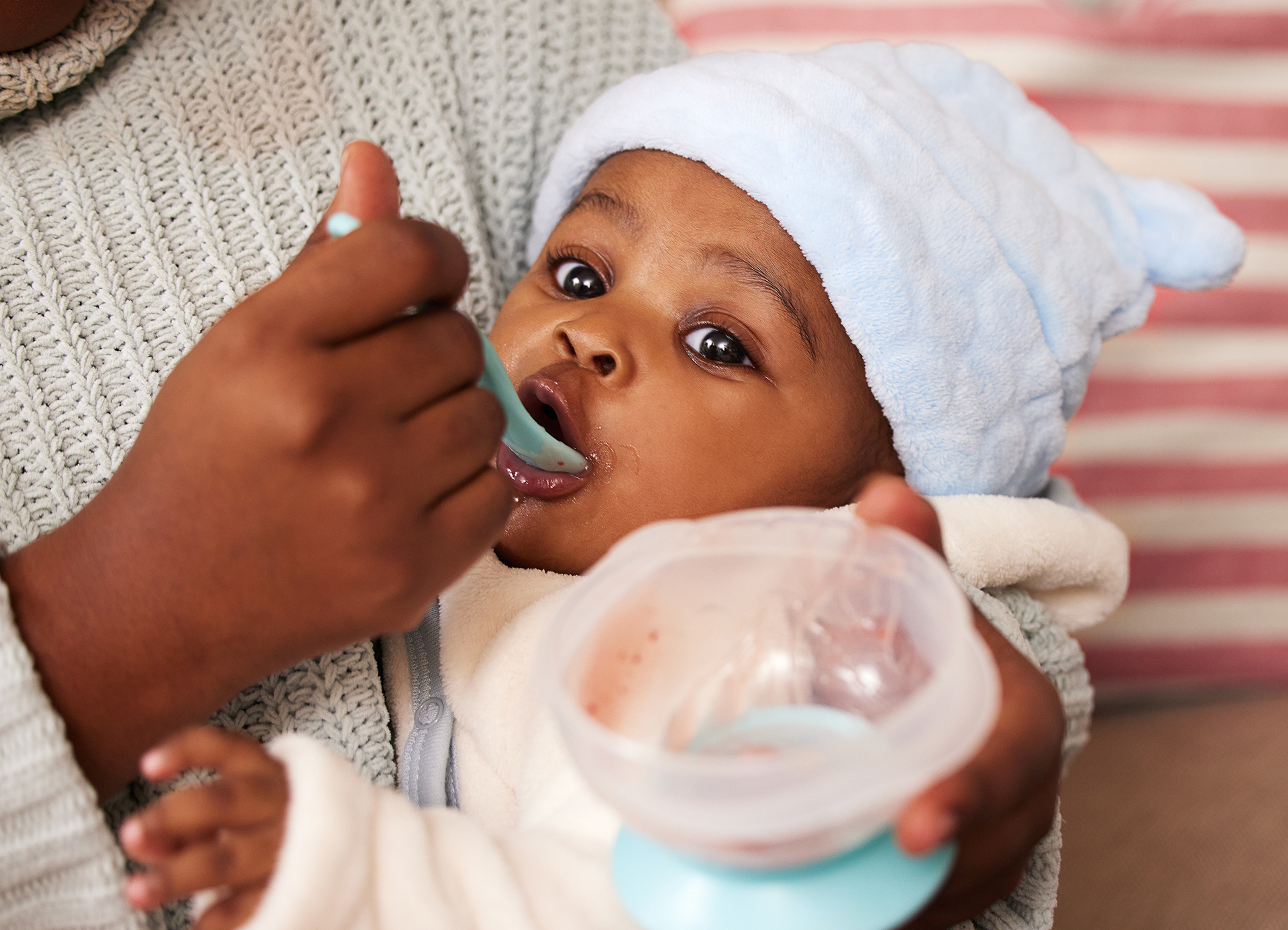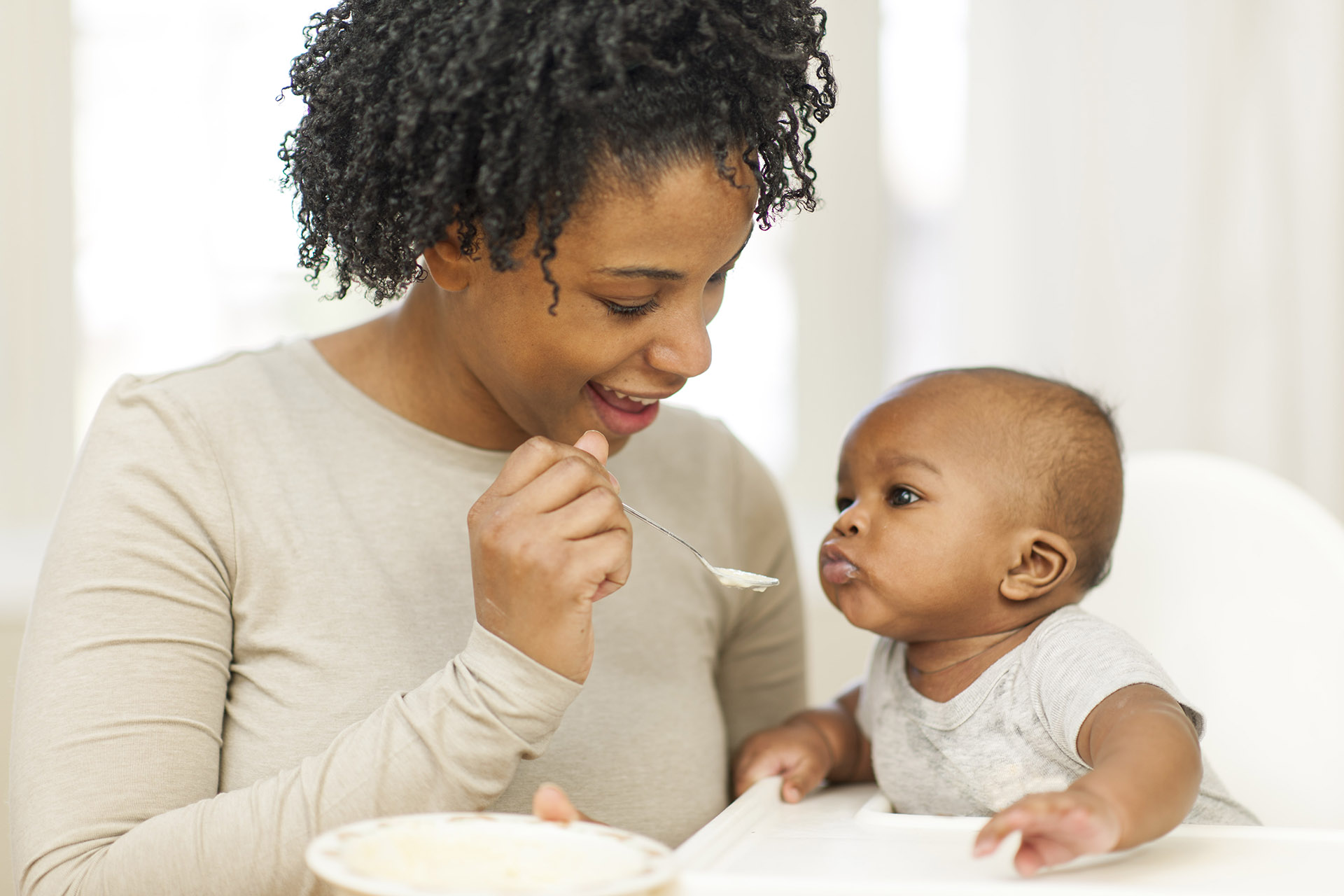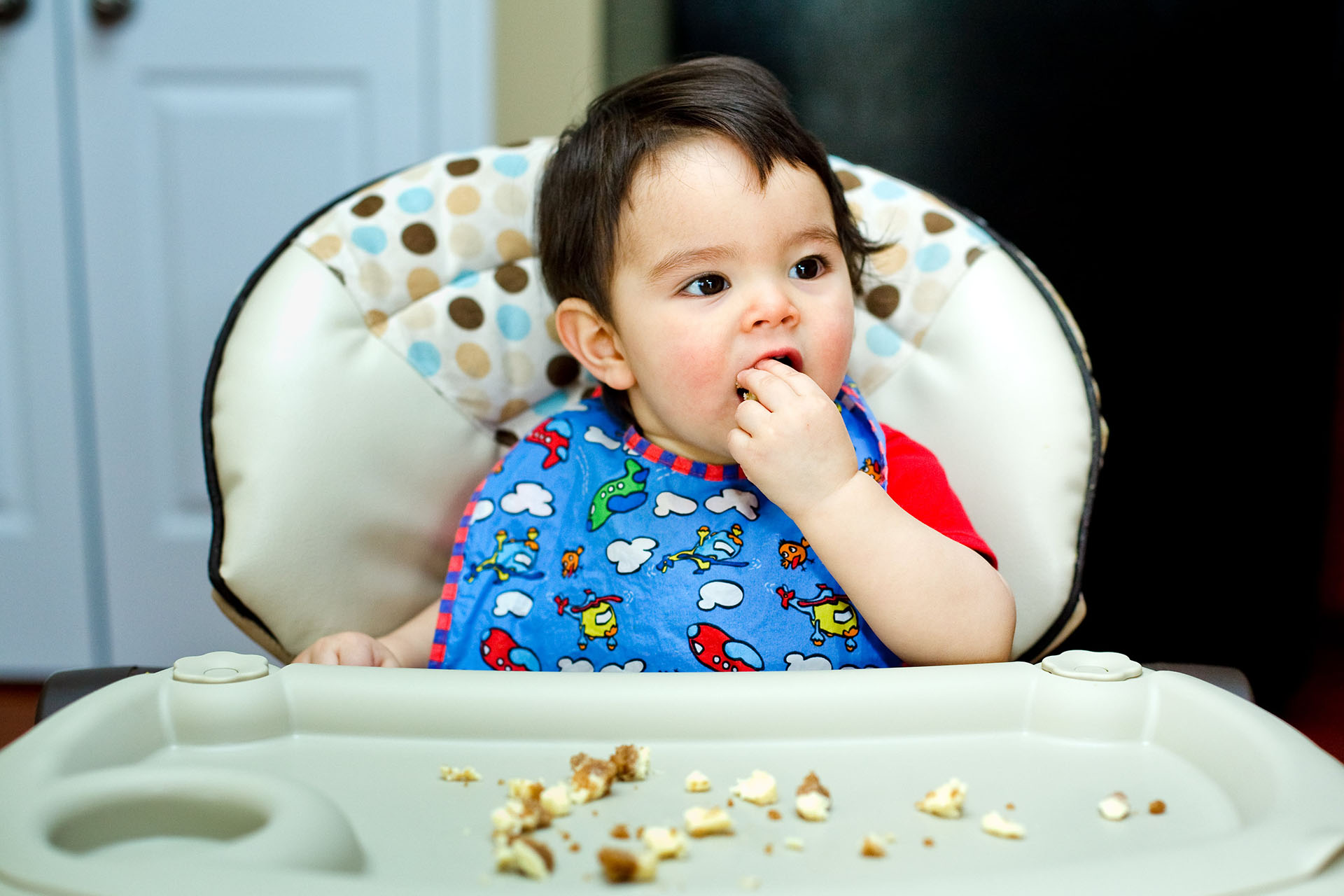


Starting to feed solids to your baby can be both exciting and scary. As a parent, it’s important to know what foods are safe to give to your baby depending on their age and development. It’s not always about your child’s age, but more so about their skills. According to the American Academy of Pediatrics, babies are usually ready to start feeding solids at around 4-6 months but it’s best to continue breastfeeding exclusively until at least 6 months.
Every baby is different and it’s important to pay attention to your baby’s cues and not rush into things. Starting solids too early puts your child at risk for food allergies and/or becoming overweight. Remember, your baby’s digestive system is still maturing, and studies show starting solids too early can cause more harm than good.

Starting solids means your baby gets to experiment with food using all their senses: touch, smell, sight, and taste. As a parent it’s important to make their first experience with food safe and successful. Choking, allergies, textures and food safety are all issues to consider when first giving solid foods to your baby. Below are guidelines to help your journey with solids be fun, safe, and successful.



Safe and Healthy Food Choices to Offer Your 6–12 month old
| EAT THIS | NOT THAT | WHY? |
|---|---|---|
| Turkey slices, cut up chicken | Hot dog | Choking hazard. Too much salt for baby. |
| Soft smooth peanut butter, spread thinly on cracker or toast or mixed with mashed fruit | Peanuts, nuts | Choking hazard. Avoid hard, round food such as nuts, hard candy and seeds. Also avoid sticky foods like chunky peanut butter or marshmallows which are hard to swallow. Allergy risk. If there is family history of food allergies talk to your pediatrician. |
| Grapes cut up “pea-sized” | Raisins/dried fruit, whole grapes or cherries | Choking hazard. |
| Human milk, infant formula or water | Cow’s milk, soy milk, rice milk; sweet drinks like juice, tea, soda or punch | Lacks proper nutrition and hard to digest. Risk of obesity. Limit juice to 4 oz a day. |
| Applesauce, mashed banana | Honey | Risk of infant botulism. |
| Cereals (cheerios/puffs) | Popcorn, tortilla chips, hard candies | Choking hazard. |
| Pasteurized milk products (yogurt, cut up cheese) | Unpasteurized milk products |
Risk of food borne illness. |
| Cooked or soft veggies - mashed/chopped broccoli/carrots | Raw carrots, celery | Choking hazard. |
| Cooked boneless fish, mashed beans, chopped egg | Raw/undercooked meats or fish | Risk of food borne infection. |
| Soft, ripe fruits - seedless watermelon, strawberries, cut mango, soft peaches, melon | Hard fruits (apple, unripe pear) | Choking hazard. |
| Animal crackers, whole grain crackers | Cookies | Lacks proper nutrition. |
Side-Lying Hold
This hold is useful when:
Cross-Cradle Hold
This hold is useful when:
Clutch or “Football” Hold
This hold is useful when:
Cradle Hold
This hold is useful when:
Laid-Back Hold
This hold is useful when: